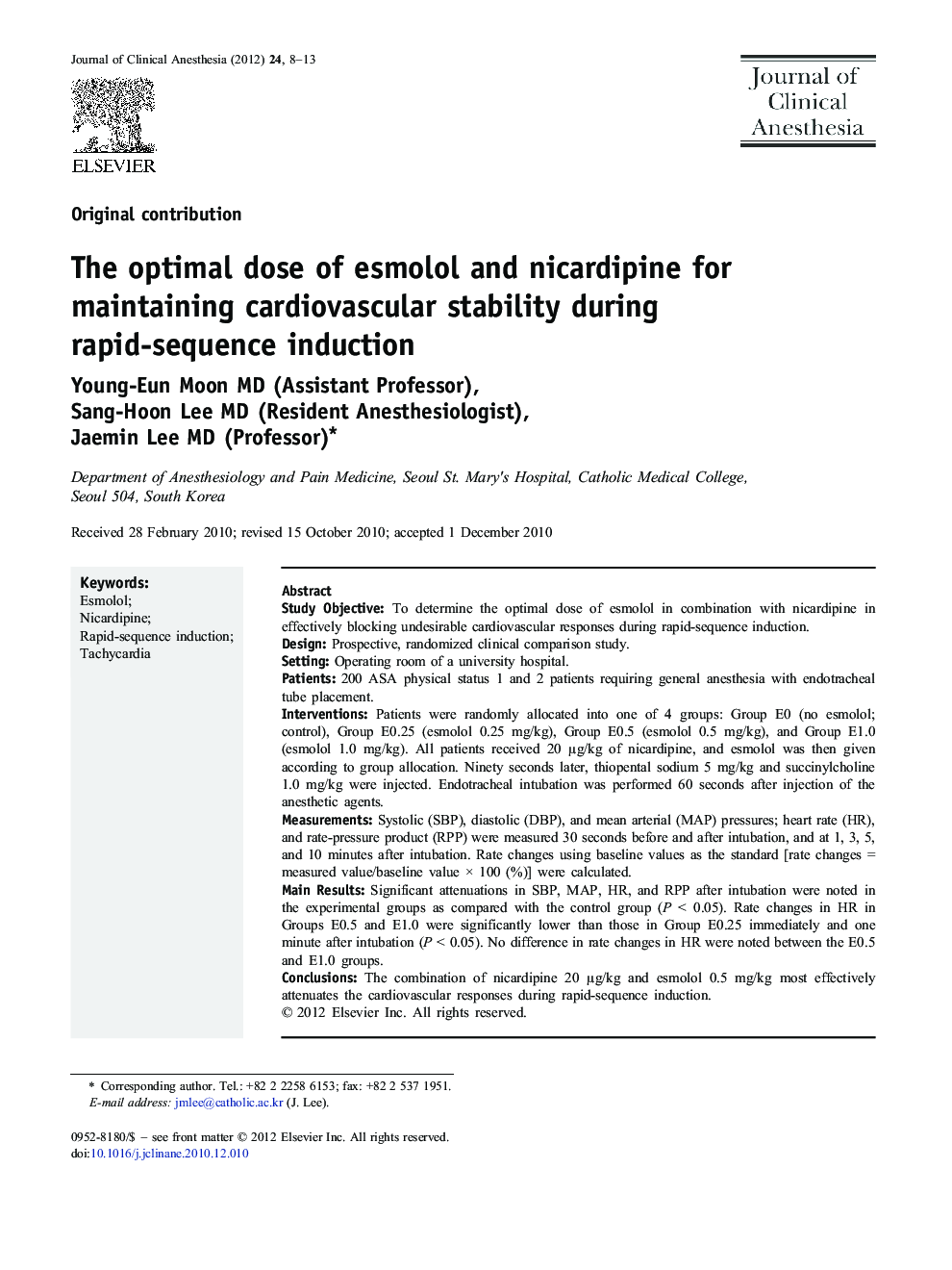| Article ID | Journal | Published Year | Pages | File Type |
|---|---|---|---|---|
| 2762848 | Journal of Clinical Anesthesia | 2012 | 6 Pages |
Study ObjectiveTo determine the optimal dose of esmolol in combination with nicardipine in effectively blocking undesirable cardiovascular responses during rapid-sequence induction.DesignProspective, randomized clinical comparison study.SettingOperating room of a university hospital.Patients200 ASA physical status 1 and 2 patients requiring general anesthesia with endotracheal tube placement.InterventionsPatients were randomly allocated into one of 4 groups: Group E0 (no esmolol; control), Group E0.25 (esmolol 0.25 mg/kg), Group E0.5 (esmolol 0.5 mg/kg), and Group E1.0 (esmolol 1.0 mg/kg). All patients received 20 μg/kg of nicardipine, and esmolol was then given according to group allocation. Ninety seconds later, thiopental sodium 5 mg/kg and succinylcholine 1.0 mg/kg were injected. Endotracheal intubation was performed 60 seconds after injection of the anesthetic agents.MeasurementsSystolic (SBP), diastolic (DBP), and mean arterial (MAP) pressures; heart rate (HR), and rate-pressure product (RPP) were measured 30 seconds before and after intubation, and at 1, 3, 5, and 10 minutes after intubation. Rate changes using baseline values as the standard [rate changes = measured value/baseline value × 100 (%)] were calculated.Main ResultsSignificant attenuations in SBP, MAP, HR, and RPP after intubation were noted in the experimental groups as compared with the control group (P < 0.05). Rate changes in HR in Groups E0.5 and E1.0 were significantly lower than those in Group E0.25 immediately and one minute after intubation (P < 0.05). No difference in rate changes in HR were noted between the E0.5 and E1.0 groups.ConclusionsThe combination of nicardipine 20 μg/kg and esmolol 0.5 mg/kg most effectively attenuates the cardiovascular responses during rapid-sequence induction.
